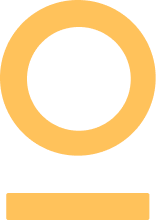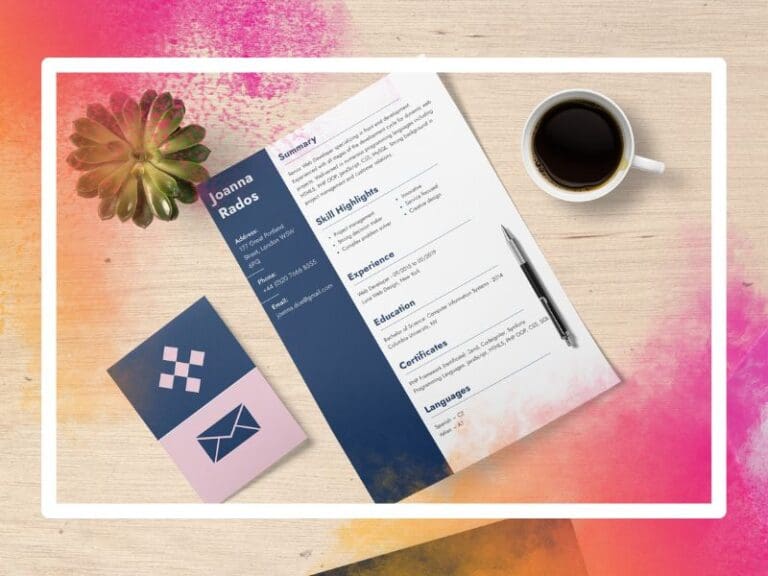These days’ job market is vicious; it may be full of potential jobs with somewhat crazy job requirements. And as a person who has been there — more than once — I know that feeling of being lost reading those job descriptions and trying to figure out the best approach to follow to get an interview and, hopefully, the job.
But, the difficulty in this process lies in using this job description to tailor your resume and land the job. Before we go any further, I want to tell you that honesty is essential, especially when building your resume. Yes, you want to tailor your resume for the job, but think of that as choosing a machine learning model for a specific dataset. Of course, you want the model to fit the data, but you still want to avoid overfitting.
So, how can you tailor your resume to a specific job description without making it look fake yet optimized to get your resume through the Applicant Tracking Systems (ATS) — the system used by HR departments to eliminate unqualified applicants — and in front of the recruiter’s eyes?
This article will go through the different steps you can take to tailor your resume, from reading the job description to extracting keywords, adding them to your resume, and then checking whether you tailored your resume well enough or do you need to do so some further modifications.
Step zero to tailoring your resume to a specific job description is having some type of job description. So, you search through job websites for different roles in data science or tech in general and end up with a handful of jobs that you’re interested in applying for.
Let’s get right into it…
STEP 1: READ THE JOB DESCRIPTION CAREFULLY
When you’re reading a job description, you will first need to read all of it thoroughly. Then you will give it another read, focusing on the preferred and required qualifications. That section is often one of the most important job descriptions, including education level, work experience, and required skills.
When I go through a job description, I often copy it into an application to highlight and move things around, like MS Word or text editor. There I can highlight the skills and keywords in the description. When a company writes a job description, they often list the most important qualifications. But you will need to use these skills in your resume later.
Another section in the job description you need to pay close attention to is the job duties section. Although, when it comes to data science roles, the name of positions is often misleading because each company has its own naming system; two companies may have different names for the same job responsibilities. So, read it carefully while listing previous experiences or knowledge about the separate duties.
STEP 2: START WITH A GENERAL RESUME.
To tailor a resume, you need to have some materials. This step is probably not needed for everyone because you probably have some type of draft for your resume to start from. But, I put this on the list because it’s better to have a master general resume from which you can create different copies based on job descriptions.
This master resume will help you create tailored ones because you won’t need to start from zero every time. So, when you’re creating this master resume, you will need to focus on choosing a simple, clear format, adding your contact information and personal details to the top of the resume, and leaving a space for the resume objectives or the heading statement.
You will also need to correctly add your education, previous work experience, and relevant achievements. You can also add any certification you obtained and your volunteering experience, especially if it connects to the job role in any way. Before you move things around to a specific description, the most important thing to do is to proofread your resume; a typo in a resume may make you look unprofessional.
STEP 3: MAKE A GENERAL LIST OF YOUR SKILLS.
So, you have the job description of the role you want to apply for and a general resume; now what? First, you will need to get a pen and paper — or use the computer if you prefer — to list your skills. Skills related to the job either directly or indirectly. You need to write all your technical skills and your soft skills.
Initially, this list will be longer than you need, but that’s a good thing. You first need to write everything and then go through it, choosing the relevant ones that overlap with the job description skills you highlighted in step 1.
Next to each step, you write on the list, you need to add a previous experience or event that shows your use of that skill in real life. For example, if leadership is on your list, you may add something like, “I lead a team of 20 developers to design and implement an app to check and compare retail prices within the city of Tokyo”. When your resume includes solid proof of your skills, it will more likely be considered for the job.
STEP 4: CATEGORIZE YOUR SKILLS.
Next, you will take the list of your skills and the skills required for the job and categorize your skills into one of three categories, job-related, transferable, and adaptive. Doing so will allow you to better tailor and customize your resume to any job description.
- Job-related skills: These skills often include mandatory skills, such as technical ones. If you’re applying to a data science job, let’s say, a machine learning specialist, you need to know some different models and implement them. You should put the skills closely related to the job on the top third of your resume so that a recruiter can easily find them.
- Transferable skills: These skills can be transferred from one job position to another. Like the ability to use a specific tool or, say, a Python library. The ability to speak another language, layout and manage projects, and write technically.
- Adaptive skills: These skills help you adjust to the changing circumstances in your work environment and enable you to learn and grow throughout your career. These skills include ones like creativity, collaboration, and good communication skills.
Categorizing your skills will help you narrow down the ones you need to include in your resume for a specific job and the ones you can opt out of for this job.
STEP 5: HIGHLIGHT YOUR SKILLS.
After you categorized your skills and had a line or two of experience proving those skills. It’s time to highlight them. Highlighting here means putting them in your resume in the correct location that’s easy for the recruiter to find and will make your resume pass the ATS.
As we just discussed, the best way to include your skills is by demonstrating how you will use them via stating past experiences. That gets more powerful by adding solid evidence like exact numbers and achievements to these experiences. For example, if one of the job requirements is the ability to write clean, concise code, you can add a point under one of your previous experiences stating something along the lines of “Decreased the size of the codebase by 5% while gaining its performance or accuracy”.
Having concurrent numbers in your resume draws the recruiter’s attention to this point and proves you know what you’re talking about. It also shows how exactly did you apply your skills vis tangible results.
STEP 6: CHECK YOUR TAILORED RESUME
Finally, once you’re done tailoring your resume, you might want to check your work before submitting it to your desired role. Luckily, there are different web services, both free and paid, that allow you to check your resume against a specific job description and tell you whether your resume will pass the ATS or not.
Here are three websites that can help you check your resume against a job description and show you the percentages of matches between them. Ideally, you should target having a match of 80% or over.
- Jobscan ATS simulator: Jobscan is a website that allows you to upload your resume and the job description of the role you’re targeting and check how much your resume matches this job description. This website can also help you optimize your LinkedIn profile.
- Skillsyncer: Like Jobscan, Skillsyncer helps you check the match level between your resume and a job description. But, it also offers other options, such as analyzing thousands of job descriptions to identify relevant keywords and help you build a more optimized resume.
If you used these websites and ended up with a matching percentage of less than 80%, then you may need to give your resume another round of edits.
FINAL THOUGHTS
Today’s job market is very saturated; hundreds and sometimes thousands of people apply for the same job. So, if you want to pass through the initial screening and into the interview round and hopefully land the job, you need a resume optimized for the job to make you stand out in the applicants’ pool.
Tailoring your resume to a job description is not just an extra step you can skip; it’s a must-do one. To tailor and optimize your resume, you will need to carefully read the job description and know how to put your skills and expertise in the correct format to make your resume pass the ATS used by most companies to eliminate unqualified applicants.
So, if you applied to many jobs but never got a callback or an interview, then maybe try to edit your resume to match the job description and try again. Finally, and most importantly, when it comes to job hunting, the most important thing is having the correct mindset accompanied by patience and perseverance.
You will get the job that is right for you because good effort never goes to waste. So, don’t give up; work hard, and it will pay off eventually.







